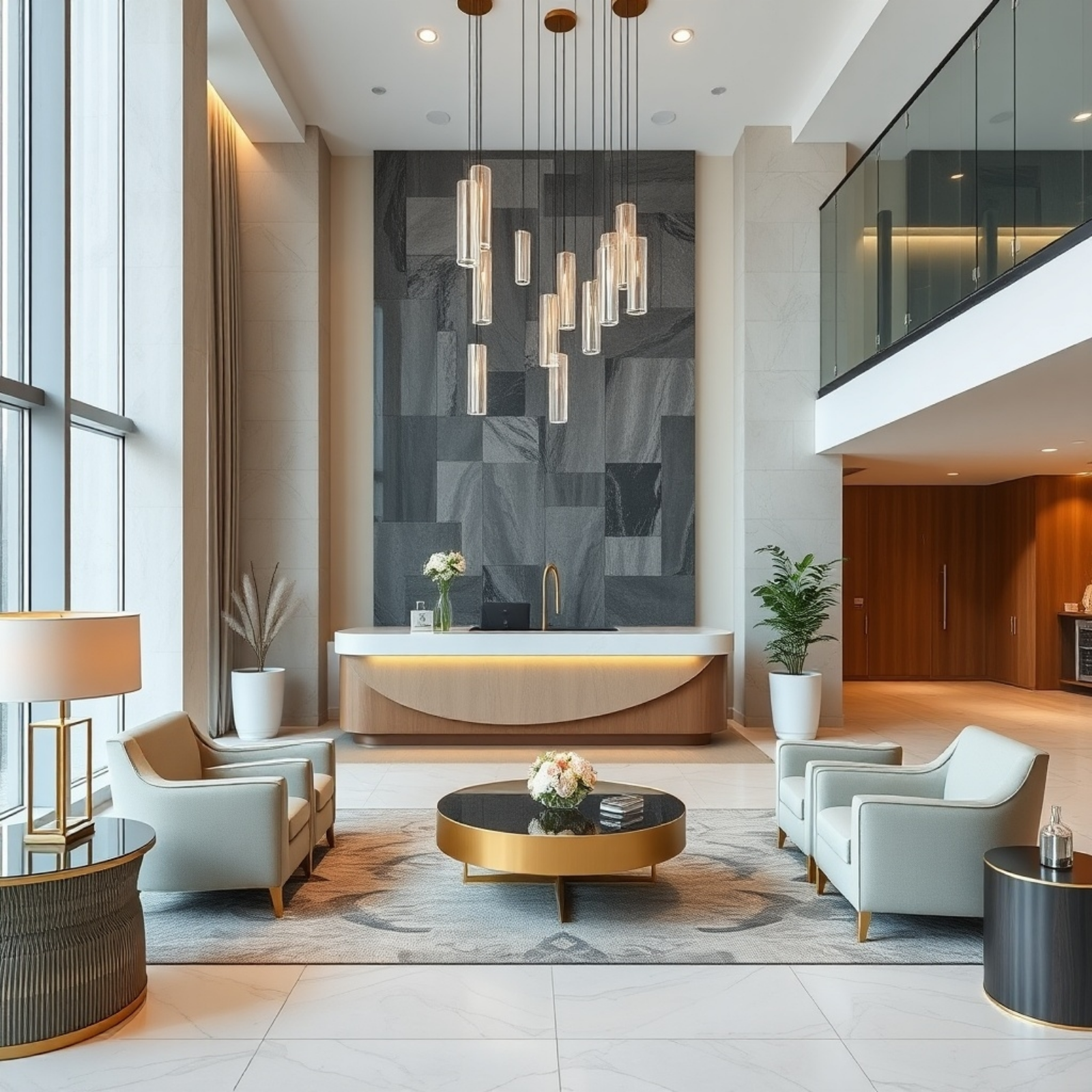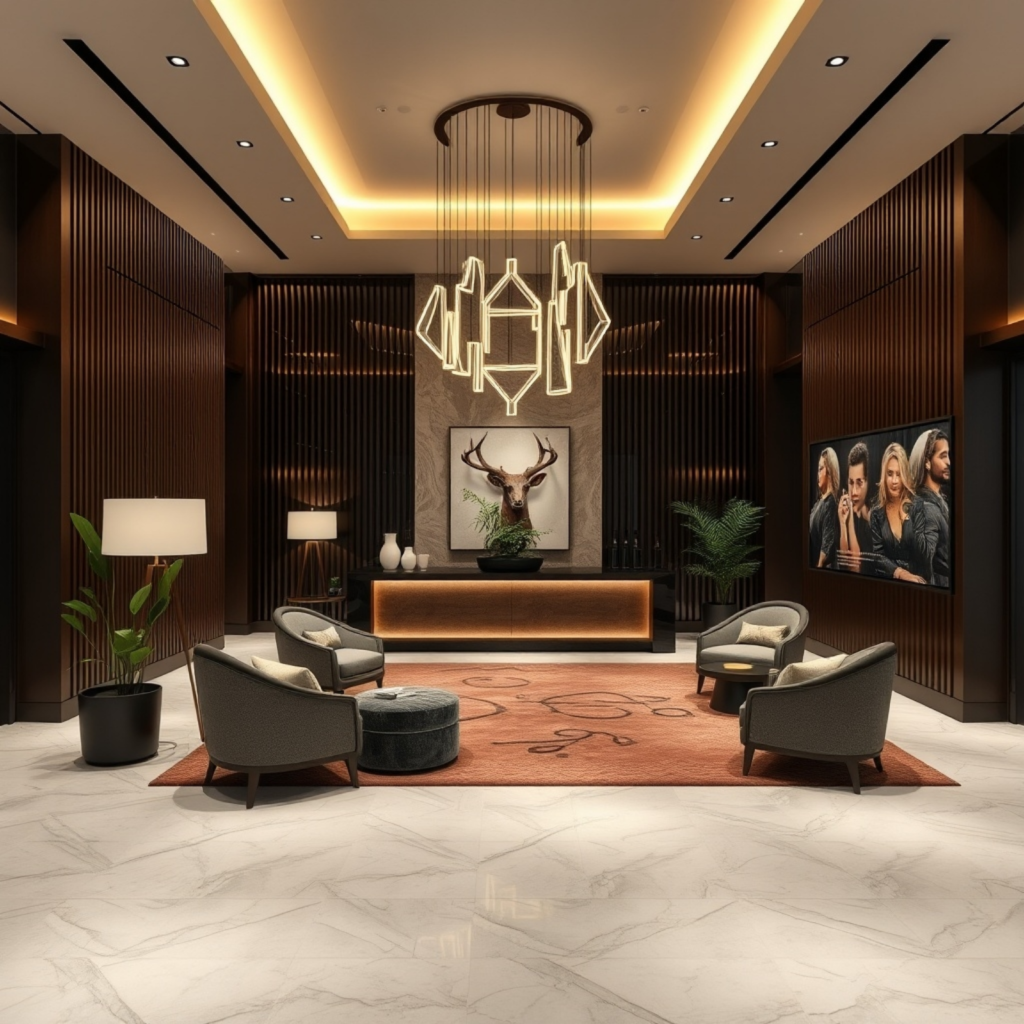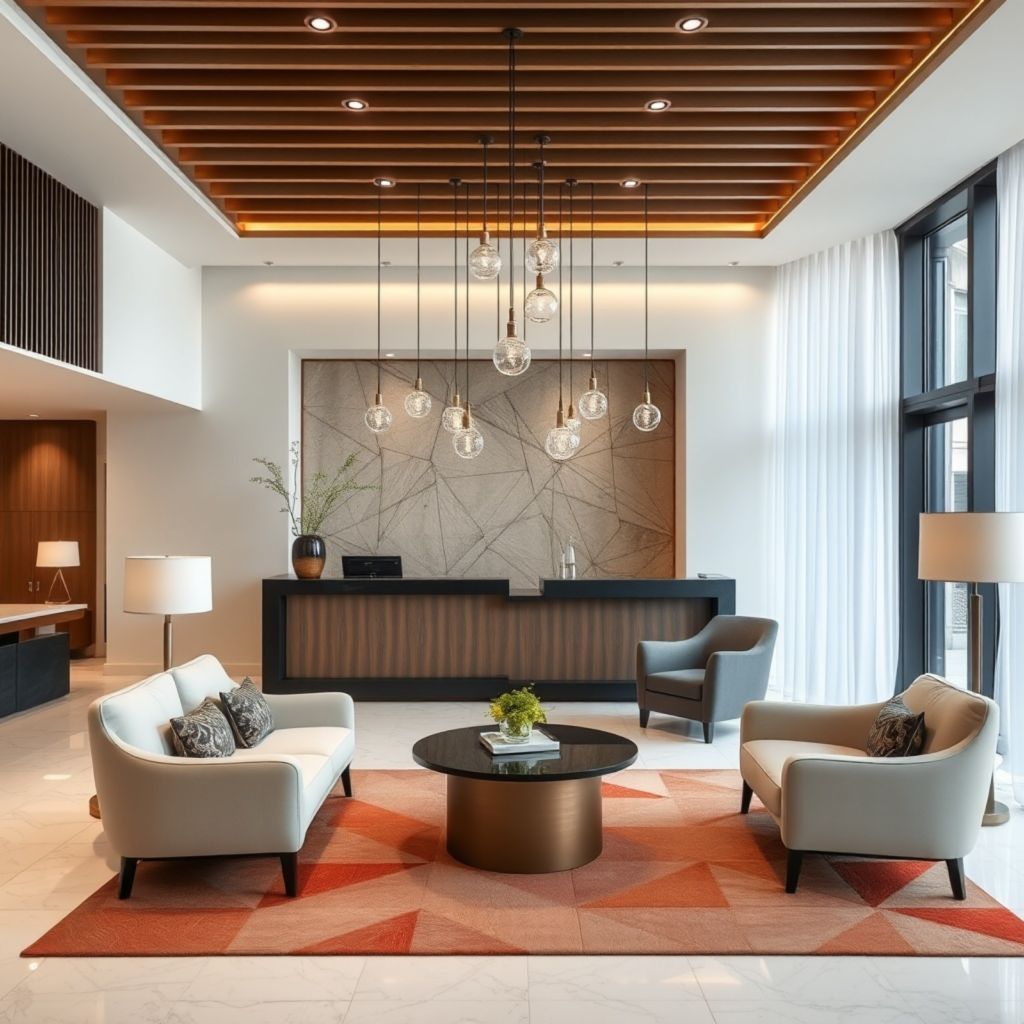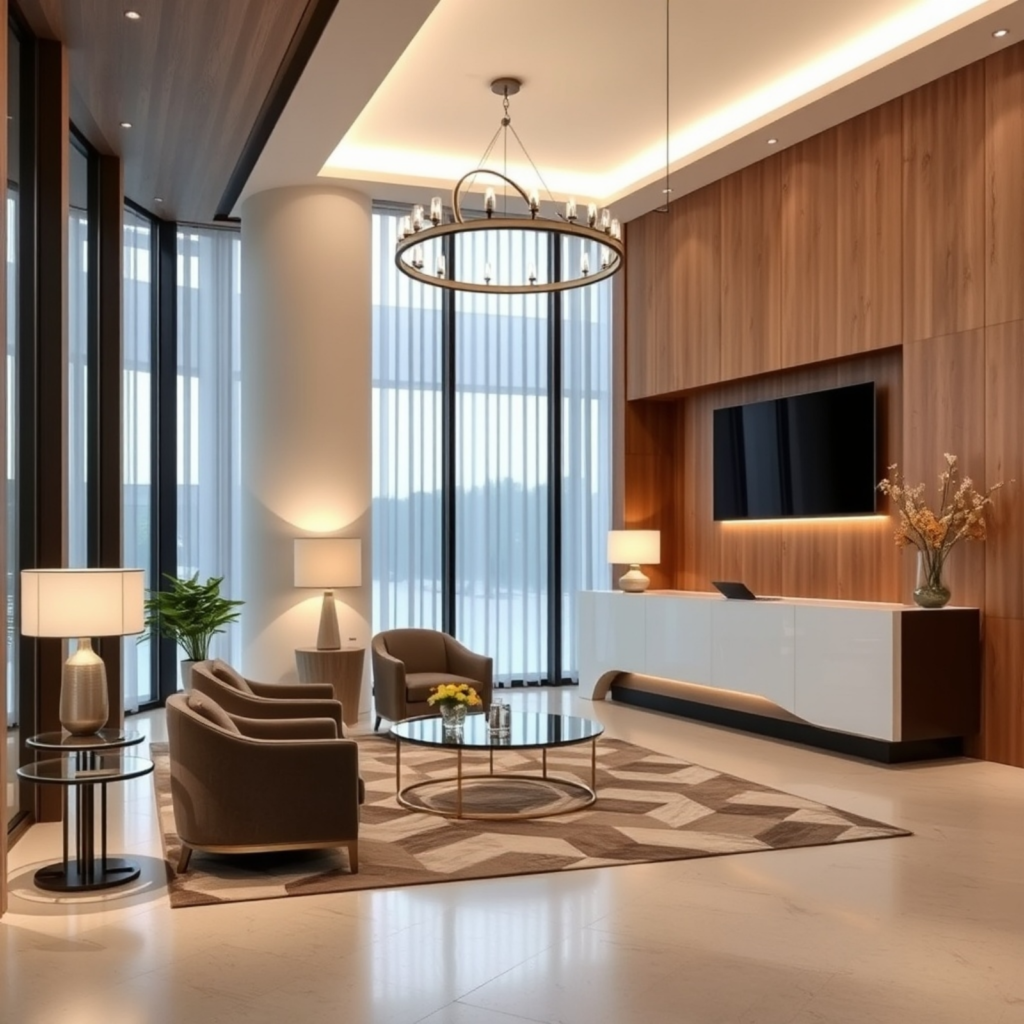

Hotel lobbies are the heart of any hospitality establishment, serving as a first impression for guests and setting the tone for their entire stay. The images provided illustrate various luxurious and sophisticated hotel lobbies that combine elegance, functionality, and visual appeal. This article delves into key architectural and interior design strategies for creating inviting and impactful reception areas, catering to architects and hotel owners looking to elevate their interior spaces.
1. Establishing a Focal Point with the Reception Desk
The reception desk is the main interaction point for guests and staff, making it a crucial element in the design of a hotel lobby. Each image showcases a unique take on reception desk designs, from minimalist styles with clean lines to more dramatic backdrops featuring intricate patterns and lighting.
Tip: Position the reception desk in a prominent location, visible upon entering the lobby. Use high-quality materials such as stone, marble, or wood to construct the desk, and consider adding a distinctive feature wall behind it to create a visual anchor for the space.

2. Creating a Welcoming Seating Area
Seating areas are essential for providing guests with a place to relax, wait, or socialize. These lobbies feature a variety of seating arrangements, from intimate groupings of armchairs to more formal setups with sofas and coffee tables, encouraging interaction and comfort.
Tip: Choose seating that aligns with the overall aesthetic of the lobby—whether contemporary, classic, or eclectic. Use different upholstery materials and colors to add texture and visual interest. Arrange the seating in clusters to promote conversation, and use rugs to define each seating zone.
3. Utilizing Statement Lighting
Lighting is one of the most powerful tools in creating ambiance. The provided designs highlight a range of lighting solutions, including chandeliers, pendant lights, and wall sconces, each adding a unique character to the space. Statement lighting not only provides illumination but also serves as a decorative focal point.
Tip: Choose lighting fixtures that complement the style of the lobby. Use a combination of ambient, task, and accent lighting to create depth and visual layers. Consider using a large chandelier or a series of pendant lights over the seating area to add a sense of grandeur.

4. Embracing Textural and Material Contrast
A sophisticated lobby design often involves a mix of materials and textures to create a dynamic and engaging space. The images showcase a variety of materials, such as sleek marble floors, warm wood paneling, and soft textiles, all working together to create visual harmony.
Tip: Experiment with different materials to add depth and interest to the design. Combine smooth surfaces like marble with textured elements like wood or fabric wall coverings. Metallic accents, such as gold or bronze, can be used to highlight certain features and add a touch of luxury.
5. Incorporating Art and Decor Elements
Artwork and decorative accessories add personality and character to a hotel lobby. The provided designs incorporate a range of art styles, from abstract paintings to sculptural pieces, enhancing the overall atmosphere and serving as conversation starters for guests.
Tip: Choose art pieces that reflect the identity of the hotel and complement the design theme. Use large-scale artworks to fill expansive wall spaces and smaller decorative items, like vases or sculptures, to add interest to side tables and shelving units.

6. Maintaining a Cohesive Color Palette
The color palette sets the mood for the lobby, with neutral tones creating a calm, sophisticated environment and bold accents adding energy and vibrancy. The images show a range of palettes, from muted earth tones to deep blues and greens, each carefully curated to evoke a specific atmosphere.
Tip: Start with a neutral base for walls, flooring, and large furniture pieces, and then layer in accent colors through smaller items like cushions, rugs, and artwork. Ensure that the color scheme remains cohesive and doesn’t overwhelm the space.
